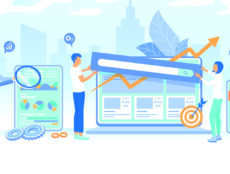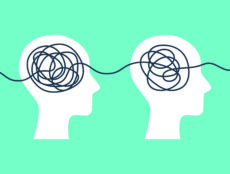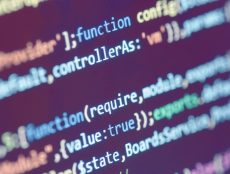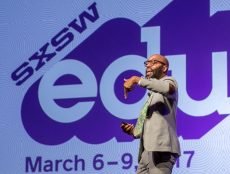
While the teacher shortage has been growing increasingly dire in recent years, we’ve seen the pandemic drive the crisis to new extremes.
It’s bad: The Economic Policy Institute reports that as of September, public K-12 education employment was down by more than half a million jobs in the previous 12 months alone. We know that fewer people are entering the profession, as evidenced by sharp declines in the number of education graduates. Some schools have resorted to hiring teachers who haven’t undergone traditional teacher training. And while educators were already calling it quits at alarming rates, recent survey data shows that 27% of existing teachers are more likely to leave teaching or retire early due to the pandemic.
The Teacher Shortage Has Accelerated During the Coronavirus Pandemic
Meanwhile, the edtech industry is booming. Throughout 2020 investor interest in edtech remained strong, even amidst global economic downturns. Over $16 billion was invested in edtech companies worldwide, with three late stage startups claiming the biggest piece of the pie.One thing they all had in common? All three outsource functions of the teacher to automated intelligence (AI).
Editor’s note: The three companies that received the most investor funding in 2020 were Yuanfudao, BYJU’S, and Zuoyebang.
As the teaching profession languishes and the edtech industry soars, we find ourselves in a pivotal moment where two futures for the teacher have emerged.
One is a future where certain functions of the teacher may be automated. In 2017, the influential British education expert, Anthony Seldon, famously predicted that robots will replace teachers, and human teachers will be relegated to the role of classroom assistants by the year 2027. In fact, in some parts of the world, some form of that future has already arrived.
The EdTech Industry Is Already Automating Significant Aspects of the Teaching Process
China has taken the lead, with tens of millions of students engaging in AI-powered learning, or “intelligent education.” In some schools student engagement is assessed by facial recognition software that gives students a weekly score via a mobile app. AI-based tutoring programs are massively popular. And many of these companies have made moves to expand abroad.
In the U.S., Google offers AI-as-a-service to schools, enabling student data-driven insights. AI powered pilot programs are underway. The global AI in education market is expected to generate $25.7 billion in 2030. Undoubtedly, global adoption of AI in education is on the rise.

The promise of AI in the classroom is profound: a completely personalized one-to-one education; expanded access to quality resources; a revolution in learning unlike anything we’ve ever seen.
But while experts agree that AI will play a key role in 21st century education, they also voice concerns about the potential harms of outsourcing certain functions of the teacher. Are we facing a future in which we risk depriving students of essential human interaction at critical moments in their development?
In spite of these concerns, when we consider the rapid emergence and adoption of AI-powered learning coupled with the magnitude of the teacher shortage, a future wherein the teacher’s role has significantly shifted can start to seem plausible, if not inevitable.
But there is a second path for the teacher that we must consider.
An Alternative to an Automated Learning Environment: Tackling the Teacher Shortage
This would be an alternative future–one where edtech doesn’t replace the teacher, but instead helps to restore the role to its formerly venerated position. This is a future in which technology empowers teachers to flow uninterrupted, masterfully directing their classrooms.
Make no mistake—the teacher shortage is a deeply complex issue with many contributing factors. It’s going to require multifaceted solutions far beyond those offered up by the tech industry.
And of course the issue of job automation extends far beyond the teaching profession. Hastened by the pandemic, we’ve seen the fourth industrial revolution threaten all kinds of professions, including doctors, factory workers, journalists, lawyers, service industry workers, and truck drivers. These are among the most common jobs in the U.S.
Humanity is being called on to reckon with what makes us unique. In the age of automation, what can we deliver that machines and algorithms can’t?
Leveraging Human Intelligence
Among the many lessons the pandemic has taught us is that, while technology plays an essential role in keeping us connected, it is no substitute for direct human interaction. Teachers can listen and empathize. Teachers can love. And, critically, teachers can apply those uniquely human abilities to education in a way that machines cannot.
The second path for the teacher is one that prioritizes student-teacher interactions, and places human engagement and collaboration at the foreground.
Which education technology will see the largest growth in the next three years? Download the new U.S. State of Technology report to find out what education leaders and teachers believe – #promethean #stateofedtechus #edtech #education https://t.co/ML6kjqqxN5
— Promethean (@Promethean) January 21, 2021
Edtech leaders have the opportunity to play a vital role in facilitating this future. It begins with inviting teachers into the product development process and conducting rigorous user testing. But it doesn’t stop there. It’s not enough for companies to install new technology in schools. EdTech companies and schools must collectively refocus on ongoing professional development. While edtech is on the rise, teacher tech training appears to have fallen off the agenda. Our State of Technology in Education report revealed that roughly one-third of respondents’ schools are lacking a formal strategy for using technology. And oftentimes, the tech training that is in place is inadequate. We must work together to correct this.
The confluence of the teacher shortage, job automation, and the pandemic represents a momentous reassembly of the world we’ve known. But amidst the tectonic quakes, we have the extraordinary opportunity to reimagine one of the most important roles in our society.
We have a clear responsibility to illuminate a future in which balanced, ethical collaboration between technology and educators is the status quo. And to embrace a path forward for the teacher that is dignified, and defined by what is uniquely and essentially human.
In doing so, we may gain a new understanding of what it means to be a teacher.
 Cheryl Miller is currently the Chief Marketing Officer at global education technology company, Promethean. Cheryl has over 20 years in the tech industry and joins Promethean from Microsoft where she was the GM of the One Commercial Partner Team, leading the worldwide go-to-market efforts. She was responsible for creating and driving accelerated success with partners through depth and breadth marketing initiatives.
Cheryl Miller is currently the Chief Marketing Officer at global education technology company, Promethean. Cheryl has over 20 years in the tech industry and joins Promethean from Microsoft where she was the GM of the One Commercial Partner Team, leading the worldwide go-to-market efforts. She was responsible for creating and driving accelerated success with partners through depth and breadth marketing initiatives.
Featured Image: BBH Singapore, Unsplash.









No Comments